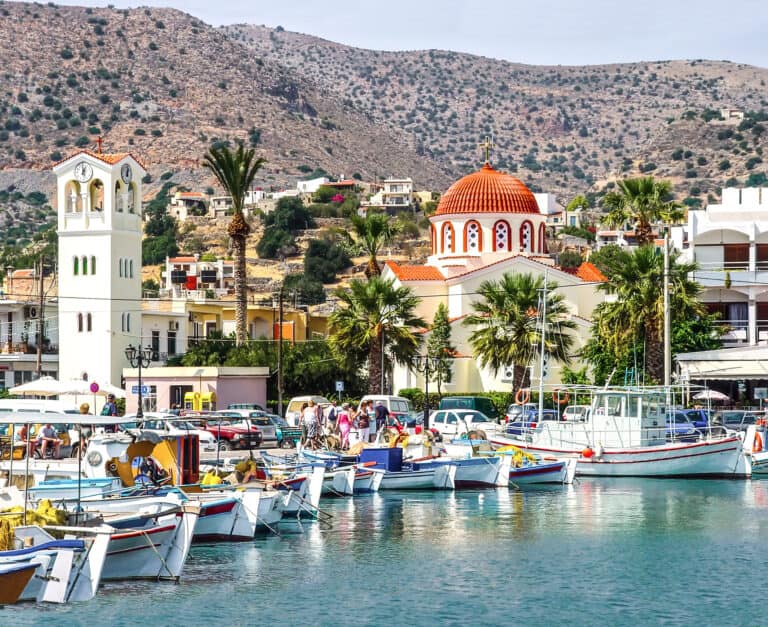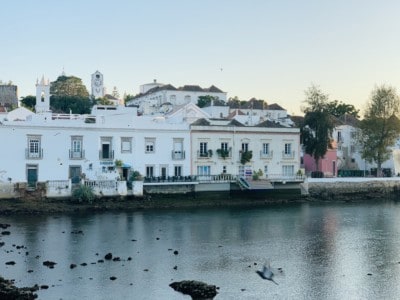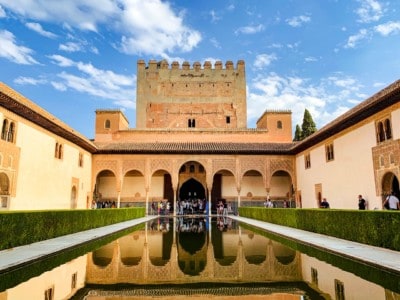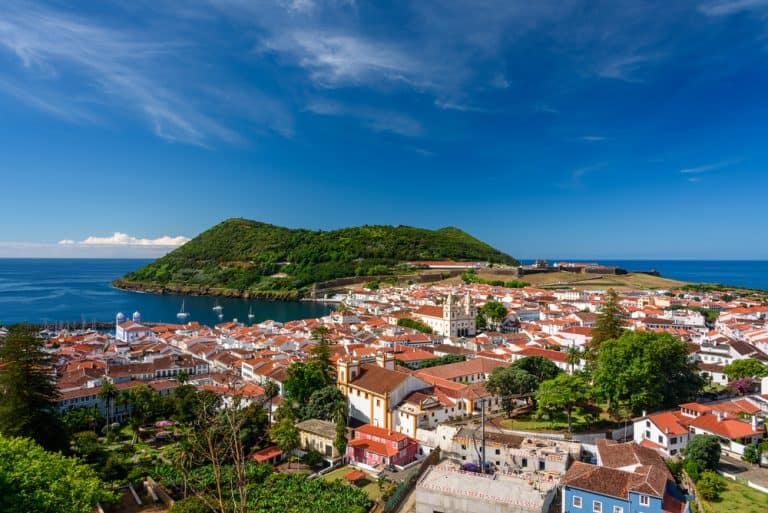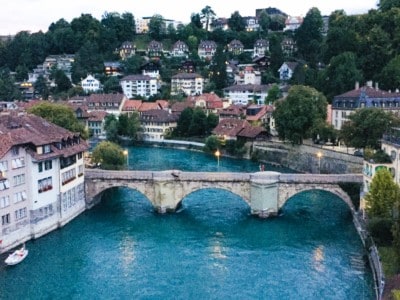2 days in Bordeaux France: your guide to the perfect itinerary

If you’re looking for an itinerary for 2 days in Bordeaux, this post has it for you.
Bordeaux is full of wonderful historic buildings, fabulous museums, and a river to wander along, and it is within easy reach of other great places if you’re looking to go out and about on day trips. The Bordeaux region is also one of the top wine regions in France, if not the world, and is a perfect destination for wine lovers.
The combination of sights to see and things to do in this beautiful city means it’s definitely one to put on your list for a short break or a long weekend.
My post gives you a Bordeaux itinerary that takes in the top sights and main attractions and covers the best things to do with 2 days in Bordeaux.
This map will also help you plan your trip and provides some useful snapshots of information.
This post contains affiliate links
Where is Bordeaux?
The city of Bordeaux is located in south western France, on the Garonne River near the Atlantic Coast. It is surrounded by famous vineyards, producing some of the finest wines in the world.
Its location means it’s a great destination if you want to extend your trip and explore more of France and northern and eastern Spain. Bordeaux is around 100 miles from La Rochelle, a medieval port city to the north.
Going inland, Limoges is around 140 miles away, and the Loire Valley, another region famous for its wines (and castles) is about 240 miles away. All would be easy to visit after spending 2 days in Bordeaux. The capital, Paris, is further away.
To the south, the coastal city of Biarritz is just over 100 miles away.
How to get to Bordeaux
The city is easily accessible by train and plane, with direct connections from all major European cities.
Bordeaux airport is less than 10 miles from the city centre, so getting in is relatively easy. You can catch a public bus or shuttle bus, both of which terminate at the main train station, Bordeaux Saint-Jean. (Note that the public bus takes longer as it makes several stops en route).
Once you arrive in Bordeaux, getting around either on foot or by public transport is easy. Taxis are also widely available throughout the city, so if you need a ride somewhere, you should be able to find one easily.
The Bordeaux City Pass
If you think you might want to get around by public transportation, consider buying the Bordeaux CityPass.
The ticket price gives you unlimited access to various modes of transport, including buses, trams, and the river shuttle. It also offers free entry to city museums, including the Cite du Vin and Bassins des Lumieres, which I’ve included in this 2 day Bordeaux itinerary. You can also go into various attractions in the city and choose a guided tour with a local guide.
For your 2 day trip, you can buy either a 24-hour or 48-hour pass. If you plan to go into a couple of museums and use some public transport, then this pass is good value.
You can purchase a City Pass here.
Things to do in Bordeaux – what to put on your Bordeaux itinerary
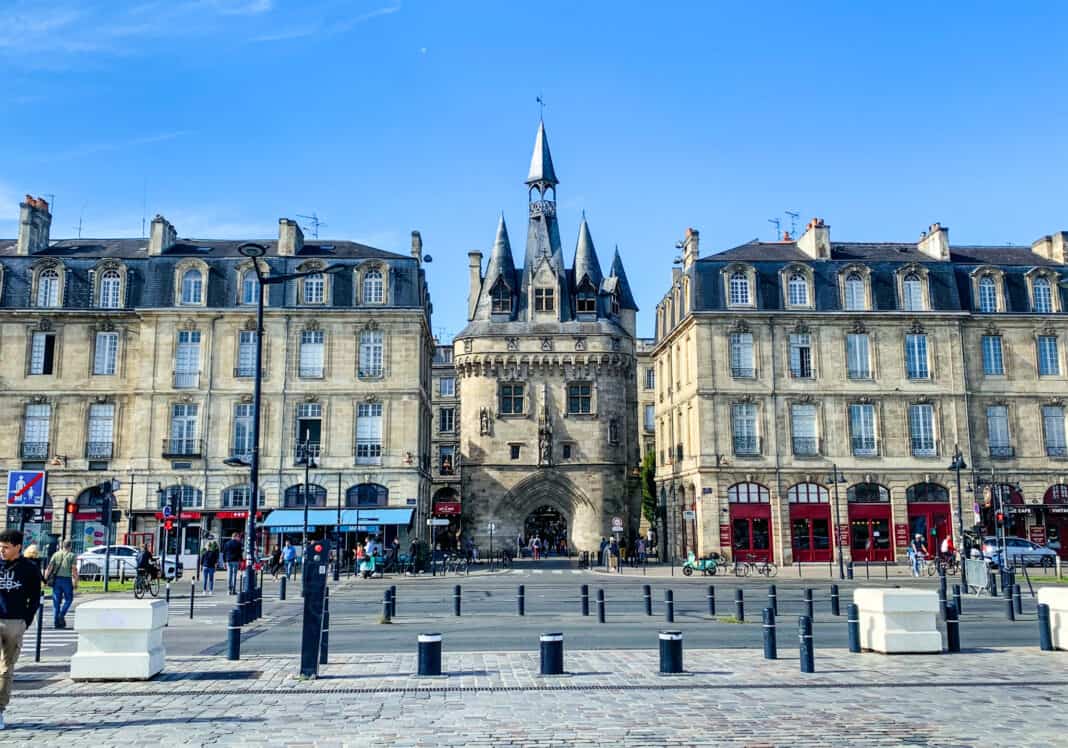
Below I have outlined the top things I think you should do with 2 days in Bordeaux. These focus on the main city centre where you will find a lot of historic buildings and monuments.
You could also book a walking tour that will take you around the main sights if you prefer.
2 days in Bordeaux: an itinerary
Day 1
Morning: Start at the Pont de Pierre and walk around the historic centre. Visit the Basilica of Saint-Michel, climb the La Fleche bell tower, see the old medieval city gates, and try out Bordeaux cannele. Walk to the stunning Place de la Bourse and see it reflected in the Miroir D’Eau. Stroll along the Garonne river and find some food for lunch.
Afternoon: Learn about the region’s famous wine in one of the city’s museums. There is La Cite du Vin, or for a more traditional experience, try the Musée du Vin et du Négoce de Bordeaux.
Day 2
Morning: Start at the Place Pey-Berland and see Bordeaux’s magnificent Cathedral and Town Hall. Walk to the Place de la Comedie and see the Grand Theatre. Then head to the Jardin Public via the Place des Quinconces.
Afternoon: Visit a museum (Les Bassins des Lumieres is highly recommended), go on a boat trip, or visit the nearby lakeside beach.
Day 1 of your Bordeaux itinerary: morning
On the morning of your first day in Bordeaux, I’d recommend getting a feel for the city by walking around the main historic centre. There are winding cobblestone streets and pretty squares to walk through, with beautiful architecture and old historic buildings, churches, and monuments to see along the way.
Start at the Pont de Pierre and Porte Bourgogne
One of the best places to start sightseeing in Bordeaux is the Pont de Pierre and Porte de Bourgogne. The Porte de Bourgogne is also the location of one of the tram stops in the city, so it is likely to be fairly easy to get here from where you are staying, even if this is on the other side of the river.
The Pont de Pierre is the city’s first bridge and translates as “stone bridge”. It was commissioned in the early 19th century by Napolean I; its 17 arches are said to be in homage to him: one arch for each letter of his name.
The bridge is worth seeing with its old-fashioned lamp posts along it. At night, it is lit up and is a lovely sight.

At the end of the Pont de Pierre and across the road on the left bank is one of the city’s old 18th-century medieval gates, the Porte de Bourgogne.
Visit the Basilica of Saint-Michel and climb La Flèche
If you walk from the Porte de Bourgogne up one of the side streets away from the river, you’ll come to the Place Saint Michel, a square with a few bars and eateries.
The gothic Basilica of Saint-Michel is also here. This is a UNESCO World Heritage Site. It has a separate free-standing 15th-century bell tower – known locally as ‘La Fleche’ – which you can climb.
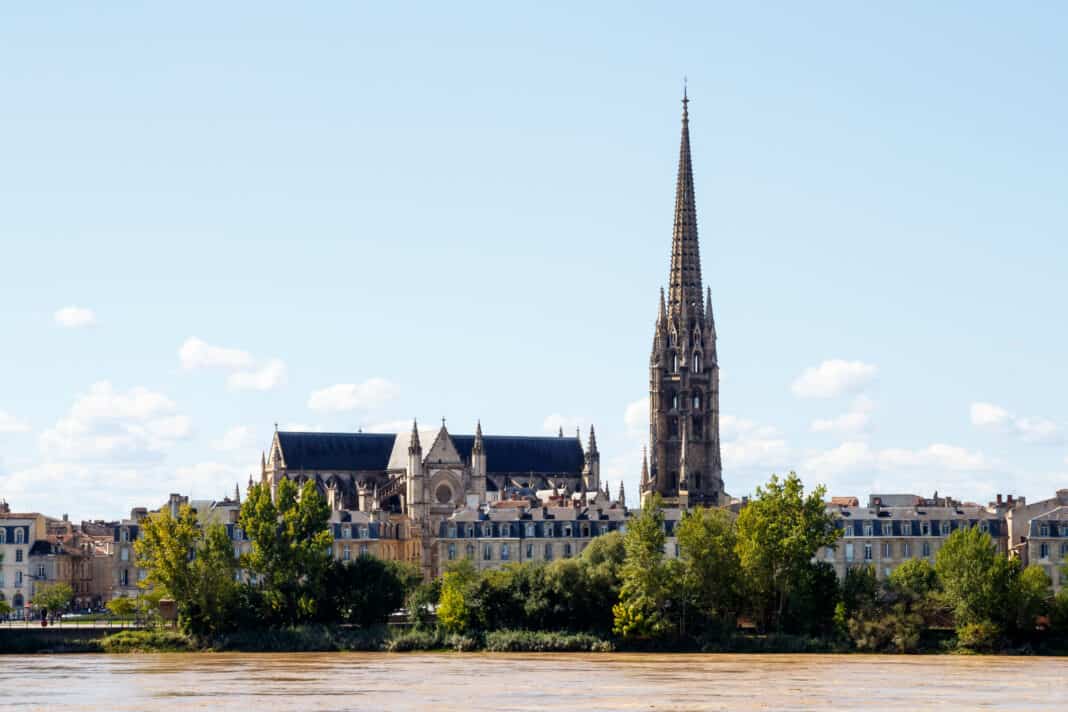
At the top, over 370 feet high, you get great views across Bordeaux. It is apparently the third-highest bell tower in France, only beaten by towers in Rouen and Strasbourg.
See the ‘Fat Bell’ and walk through La Gross Cloche
After seeing the church, head up the Rue Saint-Francois and take a right. You’ll see the striking 15th-century gothic La Gross Cloche, one of the old gateways into the city. It has a belfry and turrets and is one of the oldest and most iconic monuments in Bordeaux.

The name Gross Cloche translates as ‘fat bell’. The bell is massive and weighs more than 7,700 kilos. It only rings a few times a year on significant dates and the first Sunday of each month.
Try a cannelé
Cannelés de Bordeaux are traditional cakes from Bordeaux. They are small pastry-type cakes filled with custard that’s flavoured with vanilla and rum and with a crunchy caramelised outside. The fluted shape of the cake gives it its name. Some say its origins lie in the nearby convents, possibly as far back as the 15th century.
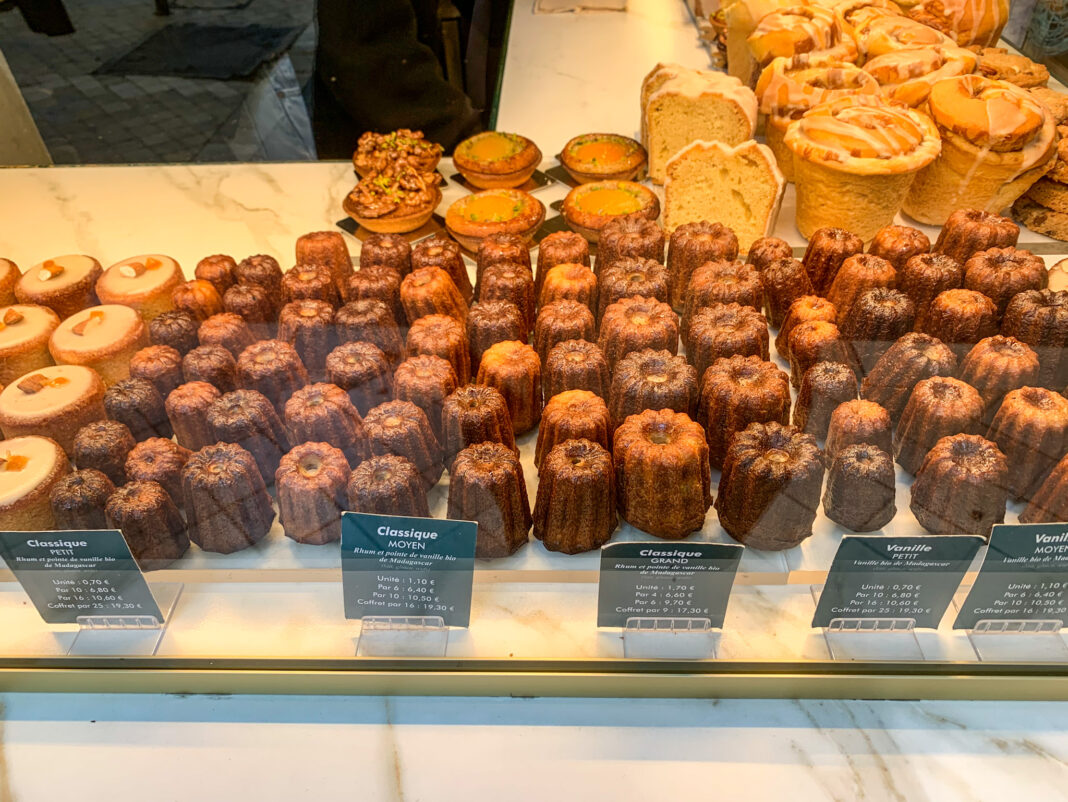
It’s worth trying one while you’re in the city, even if you don’t have a sweet tooth. The cannelés are only small, so it’s not like having to gorge your way through a massive Danish pastry or a slice of gateau. And you can easily walk this off on the rest of your sightseeing tour!
There are plenty of places to try cannalés while you’re in Bordeaux. However, a small coffee shop – Cassonade – on the other side of the Gross Cloche on Rue Saint James sells them. We stopped here for a quick coffee and cannelé before carrying on our walk around the city centre.
Wander through the Place du Parlement
After stopping for some refreshment, walk this off by heading towards the Place du Parlement (go via the Rue du Pas-St-Georges at the end of Rue Saint James).
The Place du Parlement – formerly the Place de la Liberte during the French Revolution – is an Italian-inspired square in Bordeaux. It is a large open space with picturesque 18th-century buildings around it, as well as bars and restaurants with outdoor terraces.
If you skipped the cannele earlier, you could stop here for a quick drink and snack, watch the world go by, and look at the fountain in the middle.
Go inside the Porte Cailhau
After the Place du Parlement, walk down Rue Saint Pierre to La Porte Cailhau. You’ll go slightly back on yourself here, but it’s worth the small detour.
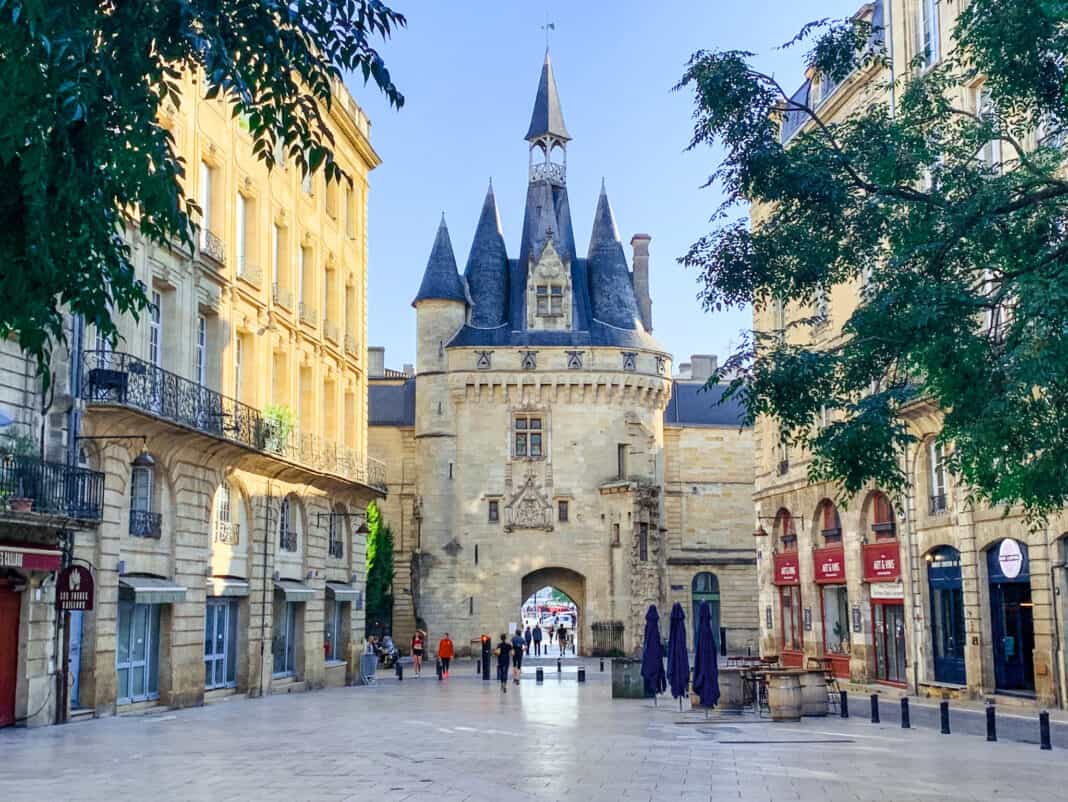
Like the Gross Cloche, this is a 15th-century gate into the city, and it stands just across from the river. You can go inside and climb to a height of over 114 feet for a great view across the river. A small exhibition also provides information about the gate’s construction.
Stop at the Place de la Bourse and look in Le Miroir d’Eau
From La Porte Cailhau, walk down the Quai de la Douane to the Place de la Bourse.
The Place de la Bourse is one of the city’s most iconic landmarks; you must not overlook seeing this on your visit. But if you’re walking along the river, you can’t miss it.
This 18th-century square is a large open space that was designed to contrast with the enclosed nature of the walled medieval city. It’s surrounded by neoclassical buildings and has a bronze and marble statue in the middle. This replaced the original statue of King Louis XV that was removed during the French Revolution.
The main attraction though (for me anyway!) is the Miroir D’Eau (water mirror). This is a UNESCO World Heritage Site that is said to be the most photographed of all the sights in Bordeaux.
It is a large shallow area of water (apparently only 2 cm deep) in front of the square that provides mirror images of the surroundings. You can also take a quick paddle here to cool off in the summer months.

If you time it right – when fewer people are around or at night – you can get some fantastic images of the Place de La Bourse reflected in the water.
Stroll along the Garonne River and try some Bordelais food
After stopping off at the Place de La Bourse, carry on along the river to the Quai des Chartrons and onto the Quai de Bacalan. This is a pleasant flat river walk along a pedestrianised promenade. You are afforded great picturesque views over the river and the bridges straddling it.
It is also where you can catch boat trips along the river.
On a walk along the river, you’ll pass a row of cafes and restaurants with outside terraces. This is the perfect place to stop for a bite to eat before carrying on your sightseeing. Alternatively, you could grab some food in one of the city’s markets.
Just off the Quai des Chartrons and up a couple of streets is the Marches des Chartrons, one of several markets in the city. This is a small covered market selling a variety of fresh produce from food stalls, including fish, cheese, chicken, and meat.
If you go to this market, also pop into the church on Rue Notre Dame. With its two tall spires, the 19th-century neo-gothic Eglise St Louis is worth popping into.
There is also a larger covered market, Les Halles de Bacalan a bit further away. Here you can browse, buy, and eat some of the delicious food from local farmers and artisans. You can get pretty much anything here: fish, meat, fresh fruit and veg, pasta, tapas, desserts, pastries, wine…you name it, you can find it here!
Day 1 of your Bordeaux itinerary: afternoon
Learn about the region’s famous wines
After lunch, you should spend some time learning about the region’s famous wines.
Bordeaux is considered to be the wine capital of France and the region has thousands of vineyards and wineries producing millions of bottles of wine a year. Most of the wine produced is red wine (for example, Merlot, Malbec, and Cabernet Sauvignon), although there are some white wines (e.g. Sauvignon Blanc and Semillion), and some rose wines.
So significant is this industry to the city and region that it’s worth going to a local wine museum, even if you don’t drink alcohol.
If you’re particularly interested in this, you can also book tours with local tour guides that will take you to nearby vineyards or to the small medieval village of Saint Emilion. This is less than 30 miles away and is also famous for its wine.
This half-day tour includes a guided tour of the village, a tour of a Grand-Cru winery, and the opportunity to sample four wines.
Click here to browse a selection of other wine tours, including longer trips out to other French wine regions, including the Dordogne Valley.
La Cité du Vin
One of the main museums you can visit to learn about wine is La Cite du Vin (the City of Wine). This is right at the end of the Quai de Bacalan, so just continue your stroll along the river after lunch until you reach it.
The museum is a fairly recent addition to the city’s attractions and a more modern take on the traditional wine tours you can take. You immediately know it’s going to house some state-of-the-art displays and exhibitions from the spectacular appearance of the building: a futuristic silver tube-like design overlooking the river.

When you enter inside, you appreciate how different it is. The museum is unlike any other wine museum I’ve ever visited. It has a range of interesting and interactive exhibits that take you around the world to explore different wine regions, learn about the history and traditions of wine, and understand more about how different types of wine are made, stored, and drunk.
La Cite du Vin is a great place to learn more about the wine industry. The content and information here (much of which is delivered via a personal audio guide) is extensive. To do it justice, you need at least a couple of hours to explore inside.
You can then take the lift up to the rooftop bar at the end of your visit. Here you’ll get to sample a glass of wine that you can take out onto the terrace and sip while looking out at a panoramic view of Bordeaux across the river.
You can purchase tickets to La Cite du Vin here.
The Musée du Vin et du Négoce de Bordeaux
Alternatively, and for a more traditional experience, you could visit the Musée du Vin et du Négoce de Bordeaux. This is not too far away and just a couple of streets inland from the Quai des Chartrons. In contrast to the modern La Cite du Vin, this museum is smaller and located in old historic wine cellars in an 18th-century building.
On a visit here, you can see old bottles and barrels, as well as equipment to make wine, and learn about the history of wine-making in the city. At the end, you get to do some wine tasting and sample two wines. The website advises leaving around an hour and a half for this.
Day 2 of your Bordeaux itinerary: morning
Start at the Place Pey-Berland
On day 2, start your tour at the Place Pey-Berland, the city’s main square. You could either walk here or catch the tram (two of the main lines go through the square and stop here).
The Cathedral Saint-Andre de Bordeaux
The main feature of the square is the magnificent Cathedral Saint-Andre de Bordeaux. This gothic cathedral has a long history dating back to the 11th century, which includes hosting the marriages of some of the kings of France and future kings.
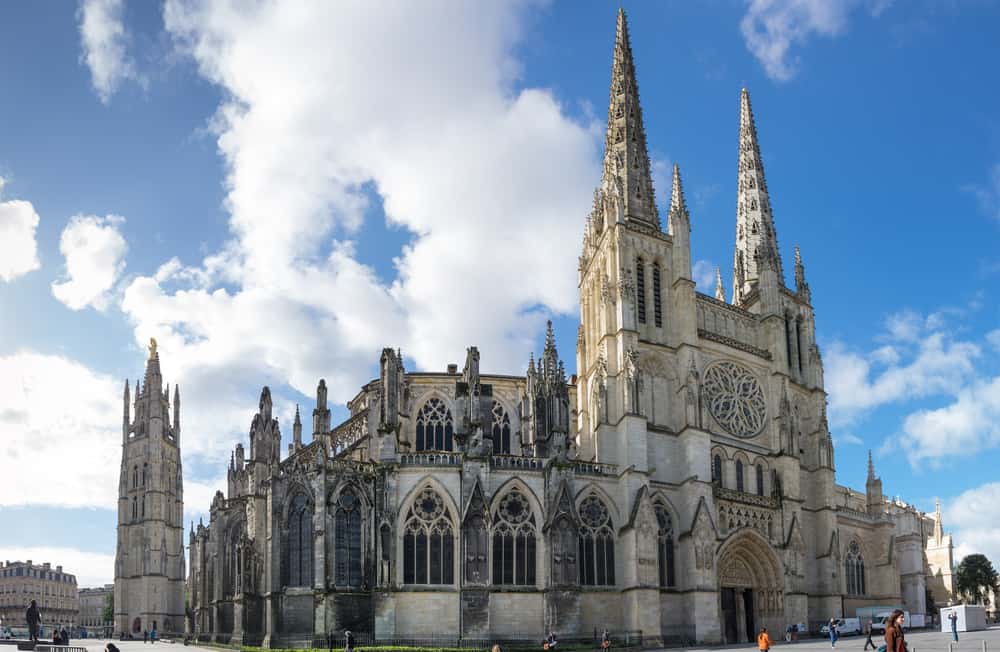
The cathedral has two towers (apparently, the original plan was for it to have four towers, but there was a risk of it becoming too heavy for the ground underneath).
It also has a separate bell tower – the Pey-Berland Tower – that you can climb (if a climb up La Fleche was not enough!). The tower is over 160 feet tall, and there are 229 steps to climb to the top. The interior of the cathedral is also worth seeing if it is open.
The Town Hall
Bordeaux’s Town Hall (the Palais Rohan) is also here and located next to the cathedral.

Its position is a result of it being the Archbishop’s palace during medieval times. It was renovated in the second half of the 18th century.
Wander down Rue Sainte-Catherine
From the Place Pey-Berland, you can then walk toward the Rue Saint Catherine (the Rue du Loup will take you to the second stretch of this street).
Stretching for almost 1,200 metres from the Place de la Victoire to the Place de la Comedie, it is Europe’s longest pedestrian shopping street. It has an excellent selection of shops, restaurants, and cafes located along it to suit all budgets.
If you need some retail therapy, this is the place to go. However, if not, or you don’t have time for this, I’d suggest just walking along it and heading towards the Place de la Comedie.
Alternatively, if you don’t fancy walking down this street (it can get very busy at the weekend), you could jump on the tram from the Place Pey-Berland and travel to the Place de la Comedie via the Cours de L’Intendance, a city street lined with grand buildings.
Look around the Place de la Comedie
At the end of the Rue Saint Catherine, you’ll find the Place de la Comedie, a wide open square with tram lines running through it. It has the city’s Grand Théâtre (the city’s opera house) on one corner, a late 18th-century building with 12 Corinthian columns and a series of statues on the outside.
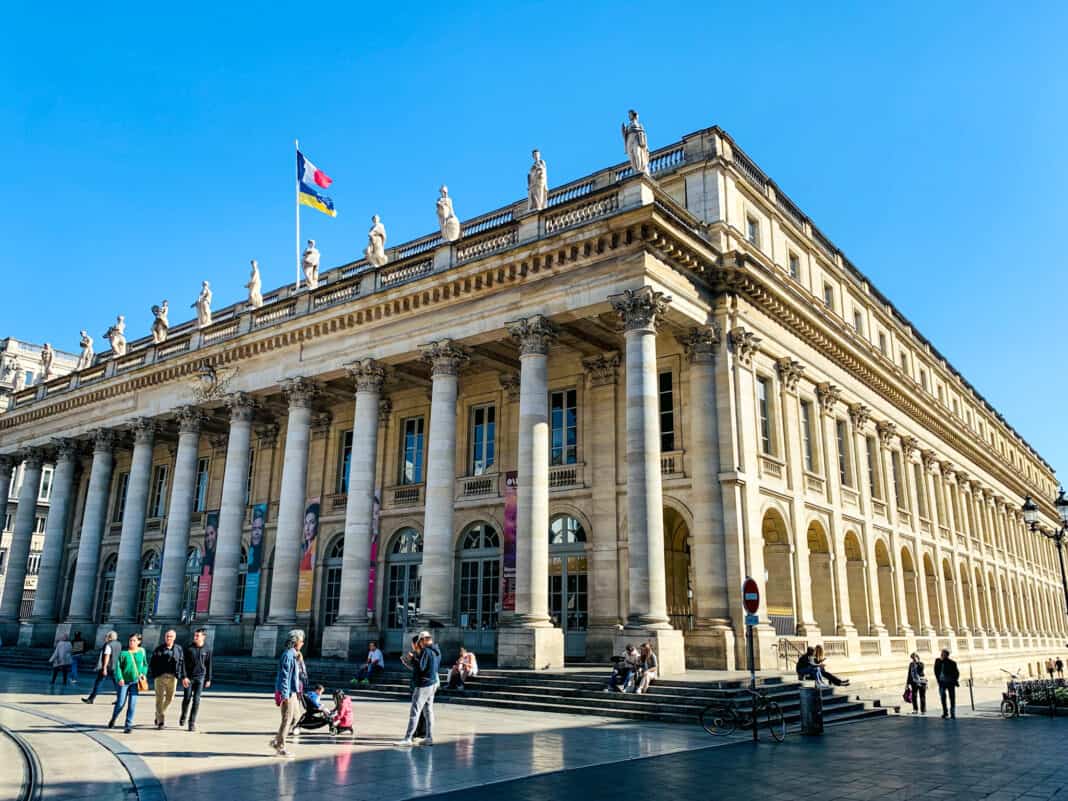
When we visited, we just walked past and looked at this magnificent building from the outside. But if you have time, you could book to see a show here. This would allow you to see the acclaimed dome in the auditorium’s ceiling which has a fresco painted on it.
The Grand Hotel (now an InterContinental five-star hotel) is on another side of the square. This is another building to take a quick look at from the outside (unless, of course, you can afford to stay here and go inside – we couldn’t!).
There’s also a striking sculpture in the square that you can’t miss – the huge Sanna sculpture of a head that towers almost 23 feet over the pavement.

Go to Le Jardin Public via the Place des Quinconces
The Place des Quinconces
After looking around the Place de La Comedie, I’d suggest walking up the Rue Cours 30 Juillet to the Place des Quinconces (or Esplanade des Quinconces). This large 30-acre open area stretches down to the river and is flanked by trees on both sides. It is said to be one of the Europe’s largest city squares.
At one end of the Place are two neo-classical columns that were erected to represent the city’s maritime and trade history.
At the other end (which you come to if you’re walking from the Place de la Comedie) is the Monument aux Girondins. This consists of a fountain with a column rising from it. A statue of liberty sits on top of this and commemorates the Girondist group who were executed during the French Revolution.
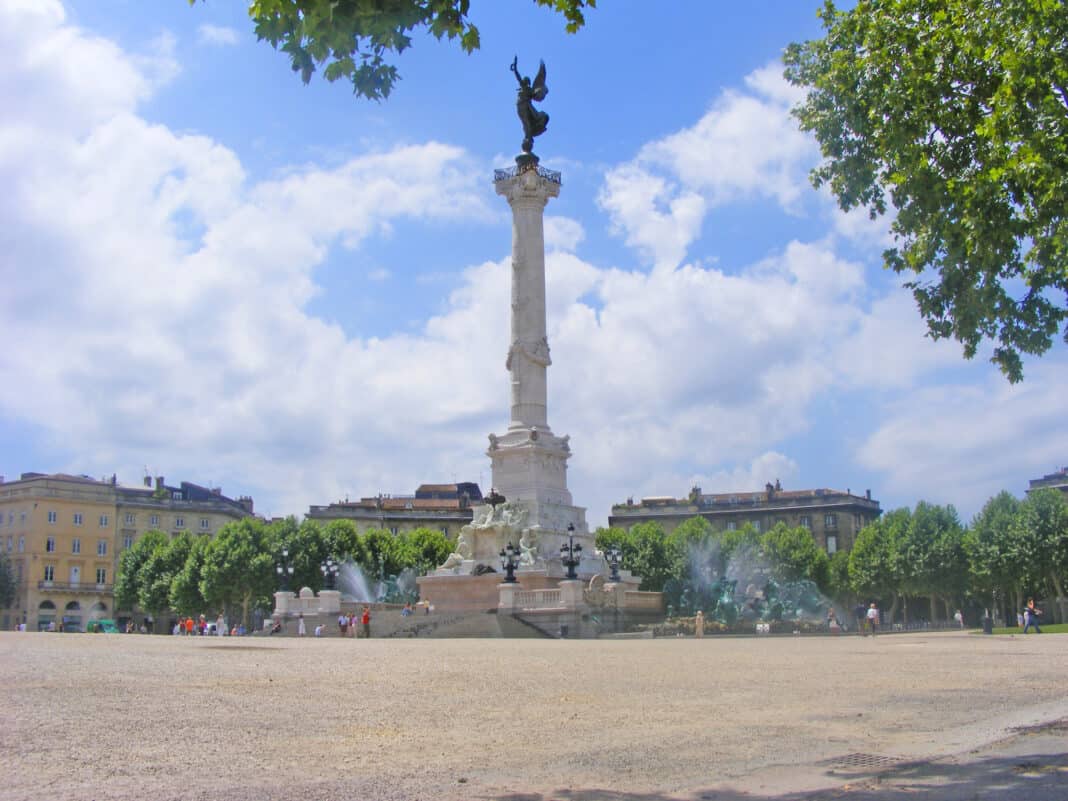
Le Jardin Public
From the Place des Quinconces, it’s then a short walk to Bordeaux’s Jardin Public. This is a lovely place to wander around and stop for some refreshments. There is a restaurant here (the Orangery) with seats on an outdoor terrace.
The garden would also be a nice place to head to if you wanted to find a spot to have a picnic. There’s plenty of places in the garden that would be suitable for this, as well as benches dotted around if you just want to take the weight off your feet.
The garden covers more than 27 acres and has plenty of wide open grassy areas, an arboretum, a botanical garden and a lake with bridges crossing it. For children, there’s a small playground, as well as performances of the famous historic Guignol Guerin puppet show at selected times.
And on one side is the city’s Natural History Museum if this interests you.

Day 2 of your Bordeaux itinerary – afternoon
There are several options for the afternoon of the second day in Bordeaux. You could visit another of the museums in Bordeaux, go to the beach (yes, there is one!) or take a boat trip up the Garonne.
Les Bassins des Lumieres
We chose to go Les Bassins des Lumieres, a unique art experience not far from La Cite du Vin (so you could combine a visit to the two if you have enough time).
We were so glad we went. We’d decided to spend our afternoon in one of the city’s museums, but it’s only fair to say that this is so much more than your traditional museum.
Billed as the biggest centre for digital arts in the world, the museum is located in the city’s old submarine base and projects massive state-of-the-art illuminations of famous works of art onto walls, ceilings, and floors. Currently, the museum is projecting some of the works of Gaudi and Dali.
The fact that it’s in an old submarine base is evident when you walk in. Even with the dim lighting in the halls, you can see that you’re walking along bridges overlooking the water tanks that once stored 15 wartime submarines. The huge projections are reflected in the water and are absolutely incredible.
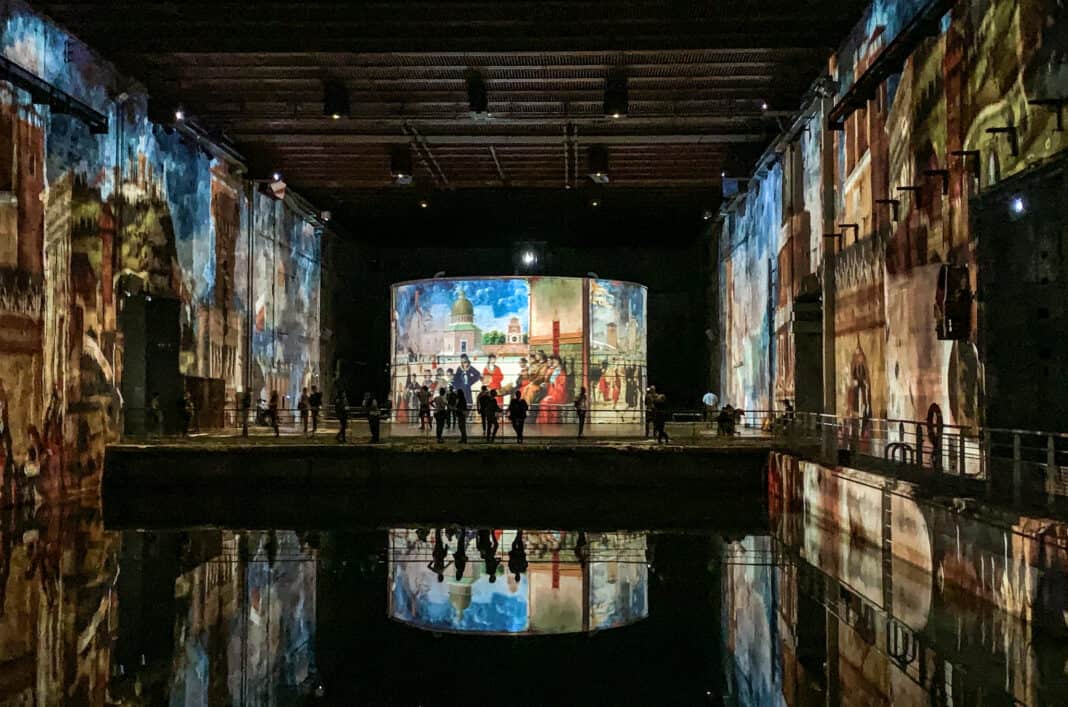

In addition, there is a room – Le Cube – that gives you a different kind of sensory experience. This is essentially the presentation of short immersive ‘films’ comprising graphics that form and twist and change before your eyes.
The room is enclosed, and there are no seats here. So you can sit, stand or even lay down and watch the displays unfolding around you. In the darkness of the room, it was really quite relaxing!
I would definitely recommend this unique museum to you. You don’t need to be an avid art lover to go here – a visit to see how the art is presented is reason enough.
La Plage de Bordeaux Lac
If you’re in the city over the summer and need to cool off, consider popping to the beach.
Given the city’s location, you’d ordinarily need more than two days to pop off to an actual beach. Fortunately, however, there is one on the side of a lake just ten minutes out of the city centre (take the Line C tram to Les Aubiers Station and then it’s just a short walk).
You can swim in the lake, picnic on the grass, play golf, lay on the sand, and generally chill out and cool down.
Boat trips down the Garonne
You may prefer to hop on a boat trip in the afternoon. This is a great way to learn more about the city and see it from a different perspective. Many also provide samples of the local wine to try.
This boat trip lasts an hour and a half and takes you from the docks near the Place de la Bourse, along the river, and provides a glass of wine and a local canale.
Or if you’re visiting on a Sunday and fancy brunch aboard a boat, then check out this trip.
Other ideas for short European breaks and day trips
If you’re interested in other short breaks or day trips in Europe, then you might be interested in some of my other posts:

